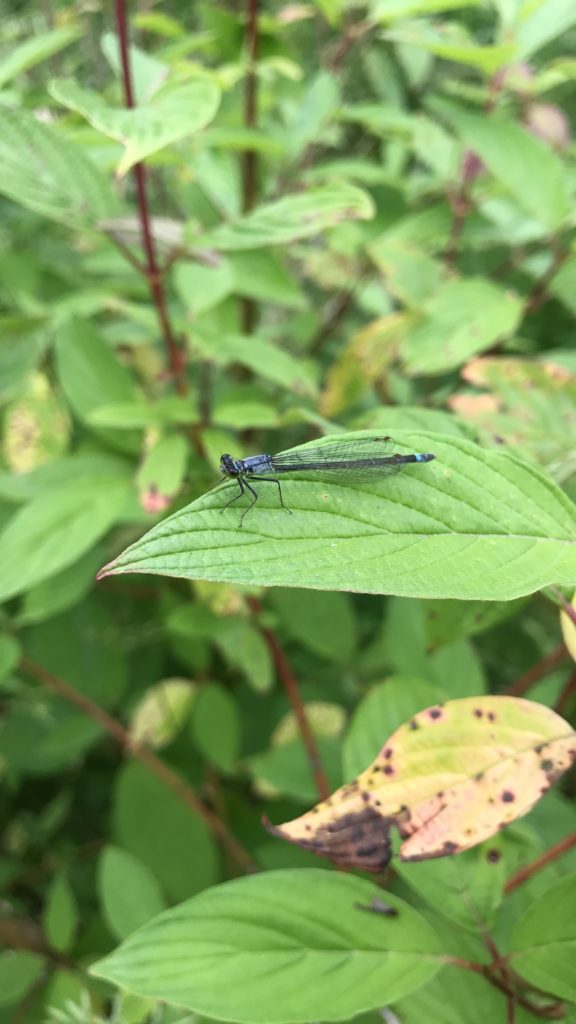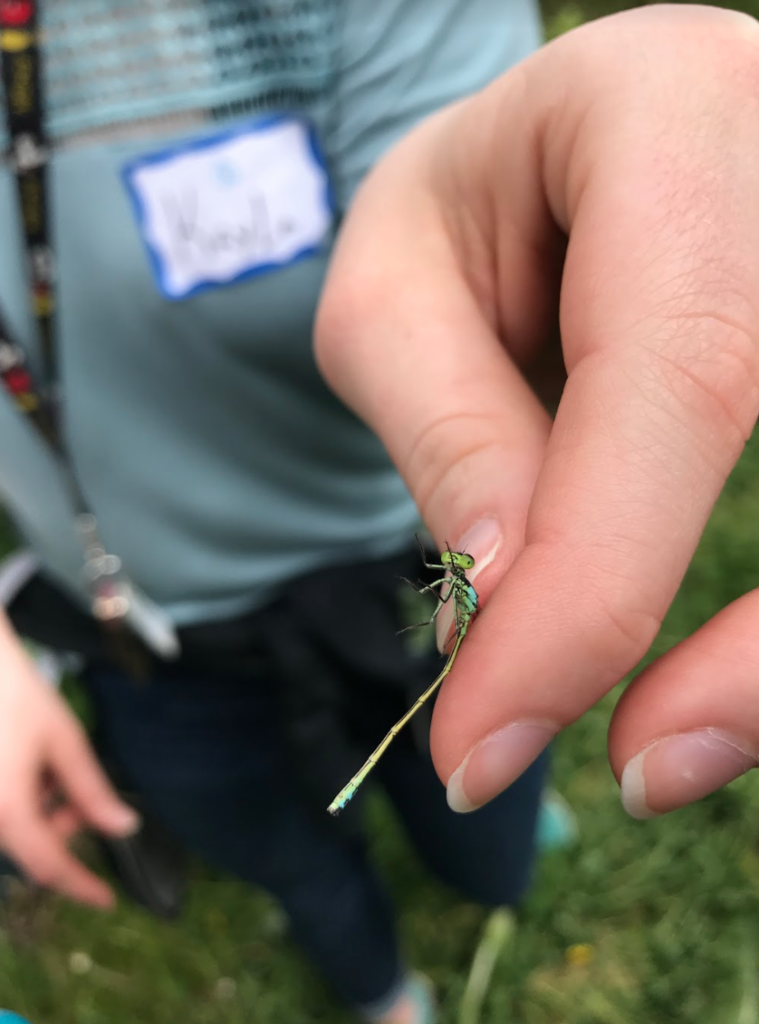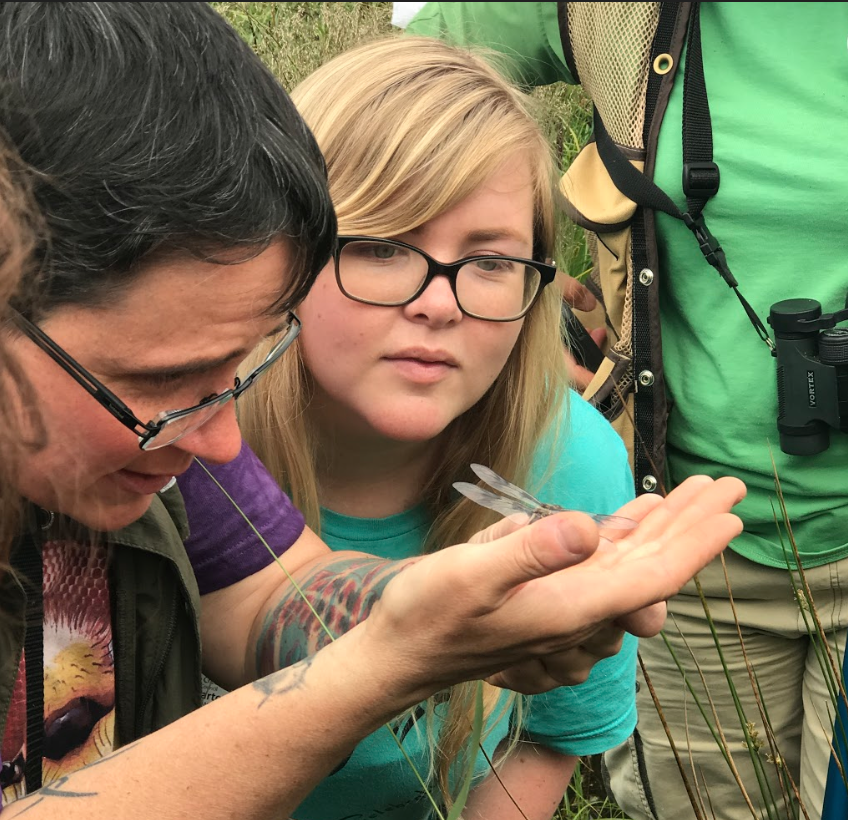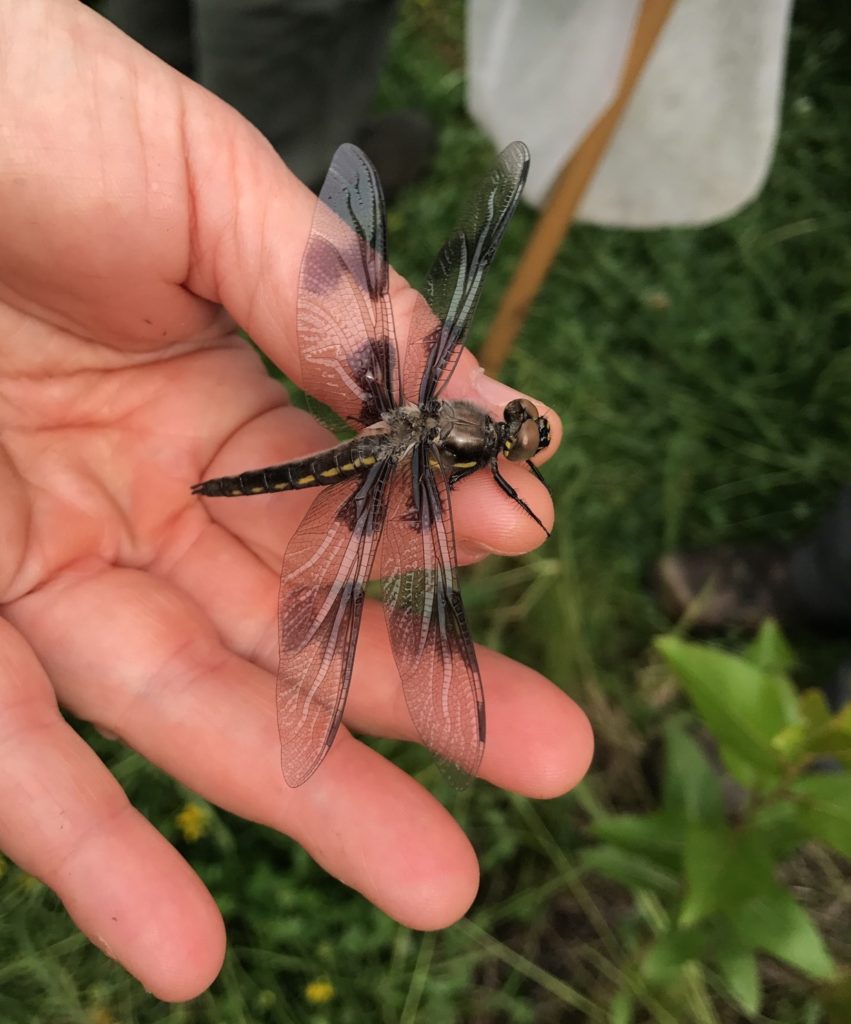Johnson Creek Watershed Council has a diverse Community Science program that employs the help of local volunteers to survey for native wildlife including salmon, lamprey, steelhead, beavers, and odonates. Odonates are carnivorous insects of the order Odonata, also known as dragonflies and damselflies. The Council has been working with volunteers to survey for dragonflies and damselflies within the watershed since 2016, asking participants to record the number of species (diversity), how many of each species (abundance) as well as when they appear (timing). With the second surveying season approaching, the Volunteer Orientation on June 6th brought a group of unique and varied community members who will spend their summer weekends surveying at three different sites, hunting through tall grasses and hiking around the water’s edge with nets at the ready to try and identify some winged odonates vital to our freshwater ecosystems within the Johnson Creek watershed.

The passionate group of people who showed up bright and early on a Saturday morning came with different motivations and skillsets. We had representation from scientists, non-profit members, local dragonfly-lovers, and Portland State students whose majors ranged from Environmental Science to Business, all wholeheartedly invested in community science and the legacy they will contribute to as members of the surveying team. After signing waivers and choosing survey dates, everyone sat around the long wooden table in the JCWC board room, drinking coffee and eating snacks while JCWC’s Outreach and Riparian Specialist Alexis Barton and Entomologist Dr. Celeste Searles Mazzacano filled the room with odonate-fueled enthusiasm as they outlined the program. Volunteers were given a handy Quick Guide to Odonates made specially by Dr. Mazzacano to narrow down the family of odonate they’ve netted, with JCWC providing everyone an aerial net, hand lens, and field guide to check out for their survey.
 Dragonflies and damselflies are very particular about the natural aspects of their habitat; they need still water to lay their eggs, plants and organic matter to rest on, and sunlight to fly. Much like the sensitive macroinvertebrates that cling to rocks and burrow beneath the sediment within a healthy, well-functioning stream, odonates are regarded as ‘indicator species’. This means that the level of odonates observed within a freshwater system indicates the level of health and functionality of that system due to their reactivity to changes in water quality and habitat design. During the field session at Westmoreland Park after the orientation, we were surrounded by damselflies and dragonflies of diverse types and colors, representing the success of the native plant restoration around Crystal Springs. We saw Pacific forktail (Ischnura cervula), Tule bluet (Enallagma carunculatum), Eight-spotted skimmer (Libellula forensis), Twelve-spotted skimmer (Libellula pulchella).
Dragonflies and damselflies are very particular about the natural aspects of their habitat; they need still water to lay their eggs, plants and organic matter to rest on, and sunlight to fly. Much like the sensitive macroinvertebrates that cling to rocks and burrow beneath the sediment within a healthy, well-functioning stream, odonates are regarded as ‘indicator species’. This means that the level of odonates observed within a freshwater system indicates the level of health and functionality of that system due to their reactivity to changes in water quality and habitat design. During the field session at Westmoreland Park after the orientation, we were surrounded by damselflies and dragonflies of diverse types and colors, representing the success of the native plant restoration around Crystal Springs. We saw Pacific forktail (Ischnura cervula), Tule bluet (Enallagma carunculatum), Eight-spotted skimmer (Libellula forensis), Twelve-spotted skimmer (Libellula pulchella).
In 2016, nine volunteers surveyed two locations across the watershed for a period of four months. This year, there are nearly thirty volunteers who will survey three locations across four summer months: Westmoreland Park, Brookside Wetland, and Centennial Pond. Centennial Pond is an especially exciting site added this year as it will soon be restored to a more natural state. The data that will come from this year’s volunteer surveyors will act as the baseline data that we will then compare to future years of surveys to see the effectiveness of the restoration project. The presence of dragonflies and damselflies within our watershed is a vital part of assuring the resiliency of our watershed in the face of global climate change.
With all of the wonderful, passionate volunteers involved, we are sure to get some amazing results this year!
This article and all of the photos included are from Emily Waters, Community Outreach Intern


